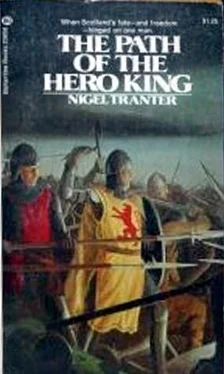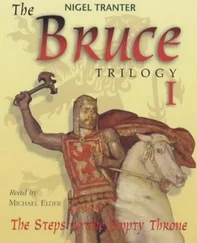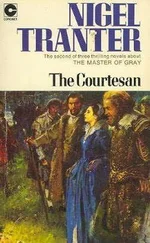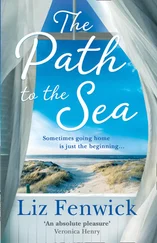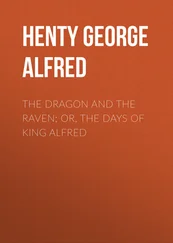THE PATH OF THE HERO KING
THE BRUCE TRILOGY
Book Two
By
Nigel Tranter
Book Two
THE PATH OF THE HERO KING
1970 by Nigel Tranter.
First published in Great Britain 1970 by Hodder and Stoughton Ltd.
Coronet edition 1972.
PRINCIPAL CHARACTERS
In Order of Appearance
David de Moray, Bishop of Moray: Uncle of patriot Andrew Moray.
Dewar of the Coioreach: Hereditary Keeper of St. Fillans staff.
Dewar of the Main: Hereditary Keeper of St. Fillans left arm bone.
Lady Elizabeth de Burgh, the Queen: Wife of Robert the First and daughter of Earl of Ulster.
Lady Marjory Bruce: Eleven-year-old only child of the King.
Robert Bruce, King of Scots: Fugitive, a few months after coronation.
Sir Edward Bruce, Earl of Carrick: Eldest brother of above, Sir Nigel Bruce: Next and favourite brother.
Sir Christopher Seton: English knight and friend of Bruce.
Second husband of Lady Christian, Countess of Mar, Bruces sister.
Lady Isobel, Countess of Buchan: Sister to Earl of life. Wife of Buchan, who fought for English.
Sir James Douglas: The Good Sir James Lord of Douglas, Friend of Bruce.
Sir Gilbert Hay: Another old friend, Lord of Erroll.
Sir Neil Campbell: Chief of Clan Campbell and Lord of Loch awe.
John de Strathbogie, Earl of Atholl; Brother-in-law of Bruces first wife.
Sot Alexander Lindsay: Lord of Crawford, a Bruce supporter, Sir Robert Fleming: Lord of Biggar, a Bruce supporter.
Sir Robert Boyd of Noddsdale: A Bruce supporter, Malcolm MacGregor of Glenorchy: Chief of Clan Alpine.
Malcolm, Earl of Lennox: A great Celtic noble, friend of Bruce.
Angus og MacDonald: Self-styled Prince and Lord of the Isles, Second son of Angus Mor, Lord of Islay.
Christina MacRuarie, Lady of Garmoran: Chieftainess of branch of Clan
Donald; widow of brother of late Earl of Mar, Sir Robert Clifford,
Lord of Brougham: English commander.
Master Nicholas Balmyle: Official of St. Andrews: former Chancellor of Scotland.
Sir Aymer de Valence, Earl of Pembroke: English commander in-chief in Scotland.
Master Bernard de Linton: Vicar of Mordington. Secretary.
William de Irvine: Armour-Bearer to the King.
John Comyn, Earl of Buchan: Lord High Constable of Scotland.
Siding with the English.
Sir Thomas Randolph, Lord of Nithsdale: Son of a step-sister of Bruce.
Sir Alexander Comyn: Brother of Buchan, Sheriff of Inverness and Keeper of Urquhart Castle.
Sir Hugh Ross: Eldest son of the Earl of Ross.
Sir James Stewart: 5th Hereditary High Steward of Scotland.
Walter Stewart: Son of above.
William, Earl of Ross: Great Celtic noble.
Alexander MacDonald of Argyll: Chief of clan. Enemy of Bruce.
Sir Robert Keith: Hereditary Knight Marischal of Scotland.
Lady Matilda Bruce: Youngest sister of the King.
Lady Isabella de Strathbogie: Sister of Earl of Atholl.
William Lamberton, Bishop of St. Andrews: Primate. Friend of Bruce.
Master Thomas Fenwick: Prior of Hexham-on-Tyne.
Sir Henry de Bohun: Nephew of Earl of Hereford.
Gilbert de Clare, Earl of Gloucester: Nephew of Edward the Second.
Ralph de Monthermer: Stepfather of above. Second husband of Edward the Firsts daughter.
Sir Marmaduke Tweng: Veteran English knight. Former keeper of Stirling Castle.
Sir Philip Moubray: Scots knight. Keeper of Stirling Castle for the English.
Henry, Earl of Hereford: Lord High Constable of England.
PART ONE
Chapter One
The Abbey of Glendochart was a ruin, of course. Had been for centuries. But there was a little shrine there still, amongst the grassy mounds and moss-grown stones that nestled under the high heather hills. It could not be called a church or chapel, either from its appearance or its intrinsic character-indeed Holy Church itself would have been the first to deny it any such title, just as she would sternly condemn any suggestion that the mounds and heaps of masonry, of which this was the last remaining entity, had ever been a true monastic limb of the Body of Christ. Holy Church was, as ever, very strong about such matters, however much she might bend to the winds of expediency in others. And the ancient Celtic Church of the Culdees, long put down, God be praised, was still anathema.
That was why David de Moray, Bishop of Moray, though a cheerful and anything but pompously clerical exponent of the Church Militant, sat outside and a little way off, his back turned to the low, squat and entirely plain little building, more like a croft house than a sanctuary, and contemplated instead the magnificent soaring skyline of Ben More and Stobinian, 3,000 feet above them, where the cloud-shadows sailed serenely across the quartz-shot stone and the purple July bell-heather, and the desperations of men seemed remote indeed. The Bishop, however, did not wholly idle away this rather deplorable interval; he honed the edge of his great two-handed sword with a most rhythmic and methodical stroke.
At a little distance, on the grassy haugh lands of the River Fillan, the men lay at ease, some 500 of them, mainly Lowland men-at arms but with some clansmen from the Southern Highlands, Campbells, MacGregors, MacLarens and the like, eyeing each other with no love lost, but glad enough to laze for a little in the smile of the July sun. They anticipated little lazing hereafter, for some time to come. Some of them took the opportunity to wash soiled and bloodstained bandaging in the clear sparkling water of the Fillan.
Inside the small low-browed building it was dark, by contrast, and not
a little stuffy; indeed a blunt man might have called it smelly
despite the illustrious quality of the folk who crowded it-for unchanged clothing, untreated wounds and horse-sweat added to the human variety, can make a potent admixture, even without the smoke from the two guttering wicks that burned in beaten iron bowls at either end of the rough stone altar at the east end of the cabin. There were perhaps forty people crammed into that confined space, some kneeling or squatting but most standing, happy when they could lean against the walling, about ten of them women. Some bowed their heads reverently, some yawned, some frankly slept, with one or two emitting quite un knightly snores-though more than that, obviously, was required to halt the flow of liquid, musical-sounding Gaelic, quite unintelligible to almost all of them, that went on and on. Two men, up at the altar, produced this-and when one faltered for lack of breath, the other took over without pause.
If the Bishop outside did not look particularly priestly, in chain mail and sword-belt, at least he had a cross and a mitre painted on his ragged surcoat. These two had not a single sacerdotal emblem or vestment between them. One was a young man, of stocky but good physique, red-haired, dressed in a short kilt of faded saffron stuff, with an open and sleeveless calfskin waistcoat, black and white, and nothing else. The other was an elderly stooping ruin of a man, of once mighty build, wrapped in a voluminous ragged tartan plaid, and grey-bearded right down to the massive gold belt of snake-links that winked in the flickering lamplight and kept his tatters approximately in place. They made strange ministrants for the singsong liturgical chanting which they gabbled endlessly. Yet none, north of the Highland Line at least, would have questioned their authority. They were two of the hereditary Dewars of Saint Fillan, custodians of the sacred relics of that royal saint of the ancient Celtic Church; the old man, the Dewar of the Coigreach, Fillans bronze-headed pastoral staff of six centuries before, which now lay along the altar-slab; and the young, Dewar of the Main, the saints left arm-bone encased in a silver reliquary, which lay beside the staff. The other three Dewars, custodians of less important relics, were not present, being unfortunately under the thumb of Macnab, Mac-an-abb, chiefly descendant of the hereditary Abbots of Glendochart, a supporter of the unlamented and abdicated King John Baliol and of his Comyn kinsmen. But these two were the principal Dewars, and if anyone could convey the blessings of Saint Fillan and of the strange former Culdee Church, these could.
Читать дальше
